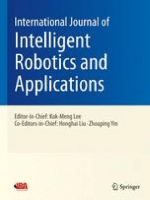
International Journal of Intelligent Robotics and Applications
Scope & Guideline
Showcasing Cutting-Edge Developments in Intelligent Robotics
Introduction
Aims and Scopes
- Robotic Control Systems:
Research on control strategies for robotic systems, including adaptive, robust, and intelligent control methodologies designed for various applications such as humanoid robots, UAVs, and industrial robots. - Autonomous Navigation:
Focus on algorithms and technologies enabling robots to navigate autonomously in dynamic and complex environments, including path planning, obstacle avoidance, and localization techniques. - Human-Robot Interaction:
Exploration of interfaces and strategies to enhance collaboration between humans and robots, including teleoperation, shared control, and communication systems that facilitate effective interaction. - Soft Robotics and Bio-Inspired Design:
Investigations into soft robotics, including the design and application of bio-inspired mechanisms and materials that enhance the adaptability and functionality of robotic systems. - Machine Learning and AI in Robotics:
Application of machine learning, deep learning, and artificial intelligence techniques to improve robotics capabilities, including perception, decision-making, and autonomous behaviors. - Multi-Robot Systems:
Research on coordination and cooperation strategies among multiple robots to achieve complex tasks in areas such as surveillance, exploration, and industrial automation.
Trending and Emerging
- Robotics for Healthcare Applications:
A surge in research on robotic systems designed for healthcare, rehabilitation, and assistive technologies, particularly focusing on human-robot collaboration and patient-centric solutions. - Sustainable and Green Robotics:
Increasing emphasis on robotics applications that promote sustainability, including waste management, environmental monitoring, and energy-efficient robotic systems. - Intelligent Automation in Industry 4.0:
Research focusing on the integration of robotics with IoT, AI, and big data analytics to enhance automation processes in smart factories and supply chains. - Advanced Human-Robot Collaboration:
A growing body of work on enhancing human-robot collaboration through adaptive systems that allow for more intuitive interactions and shared tasks in various environments. - Robustness and Safety in Robotics:
Emerging focus on developing robust and safe robotic systems that can operate reliably in unpredictable environments, particularly in applications involving human interaction.
Declining or Waning
- Traditional Industrial Robotics:
Research focused on conventional industrial robots, such as robotic arms for manufacturing, has decreased as the field shifts towards more intelligent, adaptable, and collaborative robotic systems. - Static Path Planning Techniques:
There has been a notable reduction in studies centered on traditional static path planning methods, as researchers increasingly explore dynamic and adaptive algorithms that respond to changing environments. - Basic Sensor Technologies:
Interest in basic sensor technologies without advanced integration or application has waned, giving way to more sophisticated multi-sensor fusion approaches that provide enhanced capabilities for robotic systems.
Similar Journals

Artificial Life and Robotics
Catalyzing Insights in Biochemistry and Robotic TechnologiesArtificial Life and Robotics, published by Springer, is a prominent journal in the fields of Artificial Intelligence and Biochemistry, Genetics, and Molecular Biology, with an ISSN of 1433-5298 and E-ISSN of 1614-7456. Established in 2005, the journal has continually contributed to knowledge and innovation in these rapidly evolving disciplines and is recognized for its significant impact, as indicated by its quartile rankings in the 2023 category assessments. The journal is currently positioned in Q4 for Artificial Intelligence and Q3 for General Biochemistry, Genetics and Molecular Biology, with a notable ranking of 138/221 and 262/350 in respective research areas. While it currently does not follow an open access model, it remains a valuable resource for researchers, professionals, and students seeking to advance their understanding and application of artificial life and robotic technologies. With an emphasis on interdisciplinary research, this journal aims to bridge theoretical foundations with practical applications, making it an essential platform for cutting-edge studies and discussions in the field.
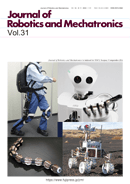
Journal of Robotics and Mechatronics
Pioneering Research for Tomorrow's TechnologiesJournal of Robotics and Mechatronics, published by FUJI TECHNOLOGY PRESS LTD, stands at the forefront of innovation in the fields of robotics and mechatronics. Since its inception in 1989, this Open Access journal has become a vital resource for researchers, professionals, and students interested in advances that merge technology with mechanical systems, offering critical insights into practical applications and theoretical developments. With a commendable impact factor reflected in its Q2 rankings in both Computer Science (miscellaneous) and Electrical and Electronic Engineering, the journal serves as a platform for disseminating high-quality research and fostering academic collaborations. The journal enjoys wide accessibility since transitioning to Open Access in 2007, allowing for a global audience to engage with groundbreaking findings relevant to both industry and academia. Based in Tokyo, Japan, the Journal of Robotics and Mechatronics aspires to bridge the gap between research and practical implementation, encouraging the exploration of novel concepts and the sharing of scientific knowledge.

JOURNAL OF INTELLIGENT & ROBOTIC SYSTEMS
Exploring Innovations in Intelligent RoboticsJOURNAL OF INTELLIGENT & ROBOTIC SYSTEMS, published by Springer, is a premier interdisciplinary journal that focuses on the rapidly evolving fields of artificial intelligence, robotics, and their applications across various engineering domains. With an impressive impact factor and ranked in the Q1 and Q2 quartiles of multiple relevant categories—including Electrical and Electronic Engineering, Control and Systems Engineering, and Mechanical Engineering—this journal is essential for researchers, industry professionals, and graduate students seeking to stay at the forefront of innovation in intelligent systems. The journal publishes high-quality research articles, reviews, and technical notes that contribute to advancing theory, practice, and the integration of intelligent robotic systems better suited to meet contemporary challenges. Founded in 1988, and with a robust indexing in Scopus, the journal continues to foster scholarly discourse and serves as a critical resource for those passionate about the future of intelligent technologies, despite not currently providing open access options.
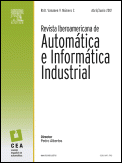
Revista Iberoamericana de Automatica e Informatica Industrial
Connecting Ideas in Automation and Industrial InformaticsRevista Iberoamericana de Automatica e Informatica Industrial (ISSN: 1697-7912, E-ISSN: 1697-7920) is a distinguished open-access journal published by UNIV POLITECNICA VALENCIA, EDITORIAL UPV, since its inception in 2007. Based in Valencia, Spain, the journal aims to foster the dissemination of high-quality research in the fields of automation and industrial informatics. With a commendable impact reflected in its 2023 Scopus rankings—Q2 in Computer Science (miscellaneous) and Q3 in Control and Systems Engineering—it serves as a pivotal platform for innovative contributions from both established researchers and emerging scholars. The journal is committed to accessibility, ensuring that all articles are freely available to a global audience, promoting collaborative advancement in technology and engineering. Its coverage spans from 2007 to 2024, making it a valuable resource for those engaged in cutting-edge research and applications in the interdisciplinary landscape of computer science and engineering.

Information Technology and Control
Connecting disciplines for a smarter future.Information Technology and Control, published by Kaunas University of Technology, is a prominent open access journal dedicated to the fields of computer science, control and systems engineering, and electrical and electronic engineering. With an ISSN of 1392-124X and a notable reputation, the journal has continuously contributed to the dissemination of innovative research since its establishment in 2008. As of 2023, it ranks in the Q3 quartile for Computer Science Applications and in the Q2 quartile for both Control and Systems Engineering and Electrical and Electronic Engineering, reflecting its growing influence in these disciplines. The journal provides a platform for the latest developments in technologies driving the industry forward and encourages an interdisciplinary approach to problem-solving. With open-access solutions implemented in 2020, it ensures that research findings are readily accessible to a global audience, supporting knowledge transfer and collaboration among researchers, professionals, and students alike. This inaugural introduction underscores the journal's commitment to fostering innovation and excellence in the rapidly evolving landscape of information technology and control.
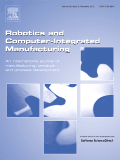
ROBOTICS AND COMPUTER-INTEGRATED MANUFACTURING
Innovating the Manufacturing Landscape with Robotics InsightsROBOTICS AND COMPUTER-INTEGRATED MANUFACTURING is a prestigious, peer-reviewed journal published by PERGAMON-ELSEVIER SCIENCE LTD. With an impressive impact factor and rankings placing it in the Q1 quartile across multiple categories, including Computer Science Applications, Control and Systems Engineering, and Industrial and Manufacturing Engineering, this journal is a leading source for cutting-edge research in its field. Since its inception in 1984 and covering a broad range of topics until 2025, it provides an essential platform for scholars and practitioners aiming to explore innovative technologies and methodologies that integrate robotics and computing in manufacturing processes. Although it does not offer an Open Access option, its rigorous editorial standards and high visibility in academic circles make it a vital resource for anyone seeking to contribute to or stay informed about advancements in these dynamic fields. As an authoritative voice in the landscape of industrial research, ROBOTICS AND COMPUTER-INTEGRATED MANUFACTURING inspires engaging discussions and collaborations among researchers, professionals, and students alike, driving forward the evolution of smart manufacturing solutions.

Industrial Robot-The International Journal of Robotics Research and Application
Connecting Research with Real-World Robotics ApplicationsIndustrial Robot-The International Journal of Robotics Research and Application is a premier academic journal published by Emerald Group Publishing Ltd in the United Kingdom. Since its inception in 1973, the journal has established itself as a critical resource for the advancement of knowledge in the fields of robotics and automation. With an impressive Q2 ranking across several categories, including Computer Science Applications, Control and Systems Engineering, and Industrial and Manufacturing Engineering, it places itself among the top-tier journals in its domain. The journal aims to disseminate high-quality research that addresses contemporary challenges and innovations in robotics, thereby supporting both academic inquiry and practical applications in industry. Researchers, professionals, and students are encouraged to contribute to its mission, as it remains vital for those seeking to engage with the ever-evolving landscape of robotic technologies.

MECHATRONICS
Fostering Excellence in Mechanical and Electronic EngineeringMECHATRONICS is a prominent journal published by PERGAMON-ELSEVIER SCIENCE LTD, focusing on the interdisciplinary fields of mechanical engineering, control and systems engineering, electrical and electronic engineering, and computer science applications. With an ISSN of 0957-4158, this journal has been a cornerstone in advancing knowledge and innovation since its inception in 1991. Known for its rigorous peer-review process and high-quality research outputs, MECHATRONICS holds prestigious rankings, including Q1 in both Electrical and Electronic Engineering and Mechanical Engineering for the year 2023, reflecting its influential position in the academic community. The journal caters to a diverse audience of researchers, professionals, and students, making it an essential resource for those looking to stay at the forefront of technological advancements in mechatronic systems. Although it does not currently offer open access, its wealth of insights and findings is indispensable for anyone pursuing excellence in engineering methodologies and applications.
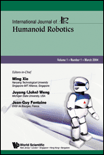
International Journal of Humanoid Robotics
Shaping Intelligent Machines through Interdisciplinary InsightInternational Journal of Humanoid Robotics, published by World Scientific Publishing Co Pte Ltd, is a leading platform for researchers and practitioners in the fields of artificial intelligence and mechanical engineering. With an ISSN of 0219-8436 and an E-ISSN of 1793-6942, this journal has established itself as a significant resource since its inception in 2004. Spanning various topics from robotic design and control to human-robot interaction, it serves a diverse interdisciplinary audience. The journal’s impressive ranking in the Scopus database, positioned in the third quartile for both categories in 2023, reflects its growing impact in the academic community. Although not open access, the journal provides crucial insights that advance the understanding of humanoid robotics and foster innovative solutions to real-world challenges. Researchers, professionals, and students are encouraged to engage with this essential resource as it continues to shape the future of robotics through rigorous scientific inquiry and scholarly collaboration.

Intelligent Service Robotics
Pioneering Insights: Where Robotics Meets Intelligent InnovationIntelligent Service Robotics, published by SPRINGER HEIDELBERG, is a leading journal that focuses on the transformative intersection of intelligent systems and robotics, establishing itself as a pivotal resource for researchers, professionals, and students in the fields of Artificial Intelligence, Computational Mechanics, and Mechanical Engineering. With an impressive impact factor reflective of its relevance—featuring a 2023 Q1 ranking in Computational Mechanics and Mechanical Engineering, and Q2 in Artificial Intelligence—this journal disseminates high-quality, peer-reviewed research that propels innovation and application in various engineering disciplines. Operating from its headquarters in Heidelberg, Germany, Intelligent Service Robotics aims to foster a dynamic academic community, encouraging open dialogue and collaboration among thought leaders and emerging scholars alike. The journal invites submissions that provide novel insights and solutions in the rapidly evolving landscape of service robotics, ensuring that it remains at the forefront of scientific discourse. With a converged publication timeline from 2008 to 2024 and robust Scopus rankings, the journal is committed to shaping the future of robotic intelligence and its applications.